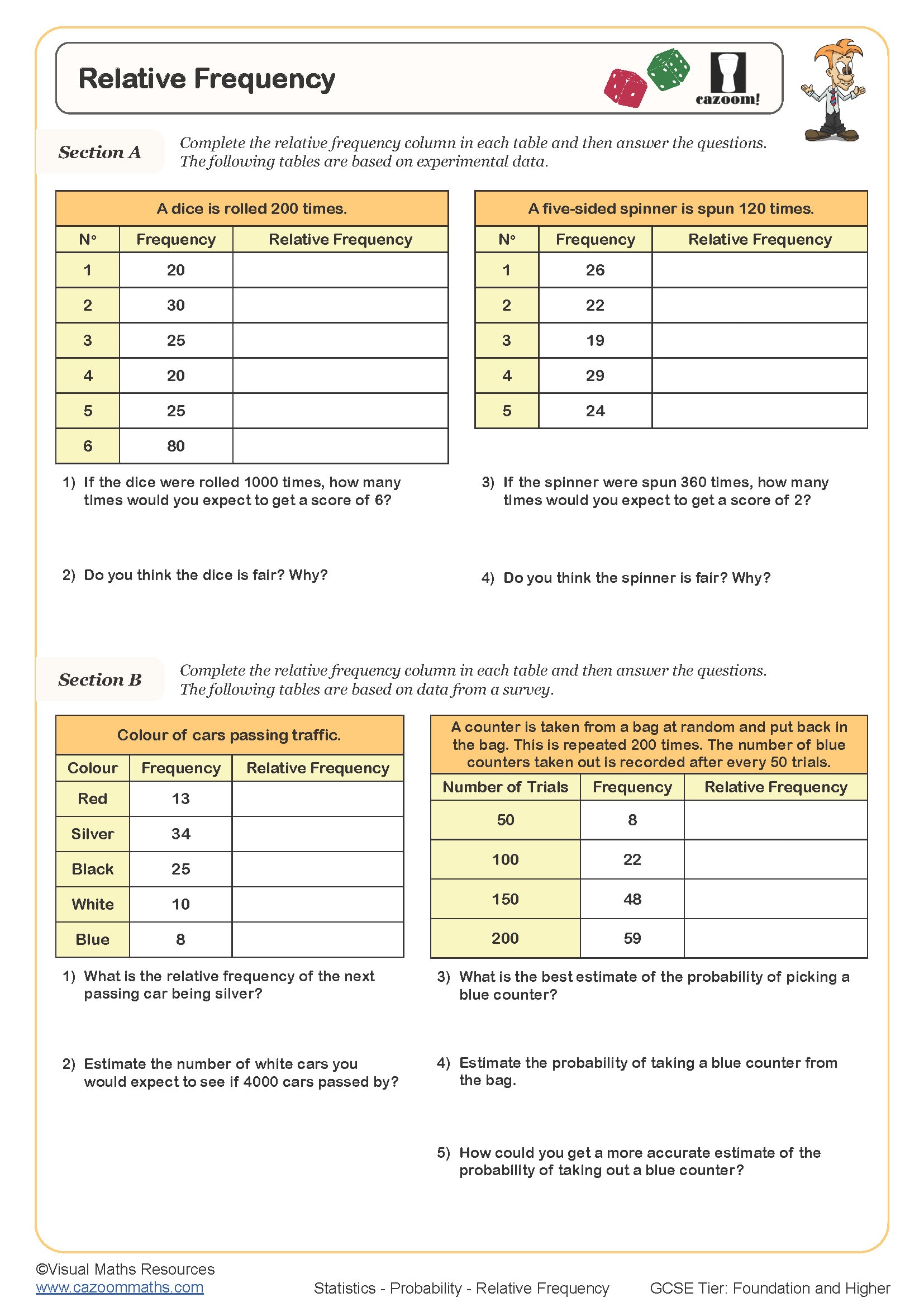Throughout this worksheet, students will use experimental data to calculate relative frequencies and use these to answer questions about the data provided.
In section A, data from two experiments is provided: rolling a dice 200 times and spinning a spinner 120 times. Learners will use the results to calculate the experimental probability of each possible outcome. This data is then used to calculate expected frequencies and discuss whether the dice and spinner used were fair or biased.
Pupils will again calculate the relative frequency of outcomes from two experiments in section B. The experimental data for one event shows the relative frequency changing over time. Students will consider this when answering the questions in section B.
Calculators are required.

